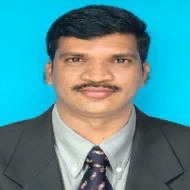
Mosiganti Joseph Prakash
Work place: CSE Dept., School of Engineering and Technology, GNITC, Hyderabad, A.P, INDIA
E-mail: mjosephp7@gmail.com
Website:
Research Interests: Engineering, Computational Engineering, Computational Science and Engineering
Biography
M.Joseph Prakash received the B.Tech Degree from Andhra University in 1996 and received his M.Tech. in Computer Science Engineering from JNTU College of Engineering, JNT University, Kukatpally, Hydera-bad , India in 2003. He is having nearly 17 years of teaching, research and industrial experience. He taught courses for B.Tech and M.Tech students. He handled various positions Professor, HOD, I/C Principal, Coordinator. He is currently working as Professor, CSE Dept., School of Engineering and Technology, Guru Nanak Institution Technical Campus (GNITC), Hyderabad, Andhrapradesh, India. He is pursuing his Ph.D from JNT University, Kakinada in Computer Science under the guidance of Dr. V. Vijaya Kumar. He is a life member of Computer Society of India, ISTE, Red Cross Society. He has published 24 papers in various, Inter National Journals and conferences including IEEE.
Author Articles
Morphological Multiscale Stationary Wavelet Transform based Texture Segmentation
By Mosiganti Joseph Prakash Saka Kezia V.Vijayakumar
DOI: https://doi.org/10.5815/ijigsp.2014.08.05, Pub. Date: 8 Jul. 2014
Image segmentation is an important step in several computer vision applications. The segmentation of images into homogeneous and meaningful regions is a fundamental technique for image analysis. Textures occupy a vital role in a wide range of computer vision research fields; from microscopic images to images sent down to earth by satellites, from the analysis of multi-spectral scan images to outdoor scenes, all consist of texture. Although several methods have been proposed, less work has been done in developing suitable techniques for segmentation of texture images. After a careful and in-depth survey on wavelet transforms, the present study found that efficient numerical solutions in the signal processing applications can be found using Stationary Wavelet Transform (SWT). SWT is redundant, linear and shift invariant, that’s why it gives a better approximation than the DWT. In this paper a novel texture segmentation method based on “SWT and Textural Properties” is proposed. Multi scale SWT with Textural Properties and morphological treatment is used in the present study to detect fine edges from texture images for a fine segmentation.
[...] Read more.Other Articles
Subscribe to receive issue release notifications and newsletters from MECS Press journals